Evolution of Smart Cities
The concept of smart cities is evolving with the advancement of technology. Incorporating Information and Communication Technology (ICT) and the Internet of Things (IoT) solution will be useful to ease the city management process. It helps to tackle the administration of city assets, including schools, libraries, hospitals, water supply networks, waste management, law enforcement and other services (Musa. 2016).
Building a smart city aims to increase the citizen’s quality of life. Using sensors integrated with real-time monitoring systems, data is collected from citizens and devices – then processed and analysed. The information and knowledge collected are keys to tackling the inefficiencies of the city administration.
Smart, Sustainable Cities can be defined as an innovative city that uses ICT and other means to improve quality of life, the efficiency of urban operation and services, and competitiveness while ensuring that it meets the needs of present and future generations with respect to economic, social, environmental as well as cultural aspects.”.
The concept of smart cities provides dual opportunities, i.e., to improve economic growth and deal with the challenges of rapid urbanisation, affecting more resource-scarce countries. It is mostly the case in developing countries where the government is giving the least importance to the subject of smart cities (Vu & Hartley, 2017). The countries like Pakistan need to transform their cities into smart ones as the population is increasing over time, reaching 243 million in 2022. Nonetheless, urbanisation was 36.5%in 2017, posing economic, spatial, social and infrastructural challenges (GoP, 2022).
These incited policymakers to transform urban settlements into sustainable urban areas. Moreover, Pakistan Vision 2025 also endorsed the development of digitally connected cities, which will be equipped with wireless network sensors and devices that must be connected, allowing the easy transmission of information (GoP, 2018). Akin to this, Punjab Growth Strategy 2018 aimed to develop cities as an engine of growth by utilising digital tools to solve the problems of urban issues (GoP, 2018).
Indicators of Smart Cities
The indicators of smart cities are comprised of various industries of the city. Cohen explicitly elaborated on the components of smart cities in Figure 1 below. The author has compartmentalised the smart city indicators into six categories: smart economy, smart environment, smart government, smart living, smart mobility, and smart people (Cohen, 2012).
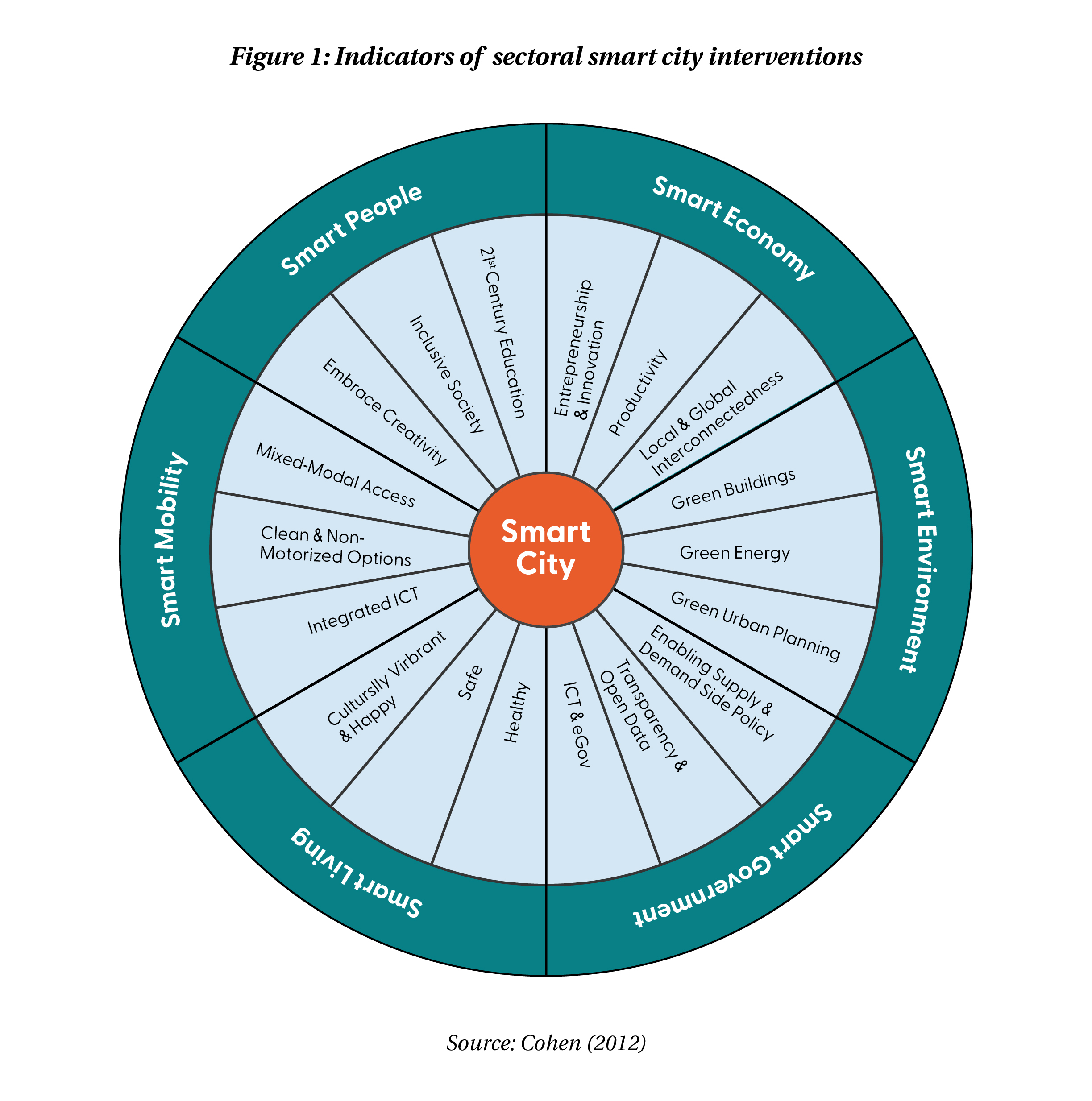 Smart City Infrastructure
Smart City Infrastructure
Smart infrastructure can influence and direct its use, maintenance and support by responding intelligently to environmental changes.
The world is moving towards digital infrastructure; sensing technologies are embedded with the infrastructure, generating real-time data and analysis. The collected data is analysed, interpreted and delivered as reliable, robust and meaningful information to infrastructure providers, who can then make better-informed decisions about their assets’ structural health and maintenance (Khan, 2016).
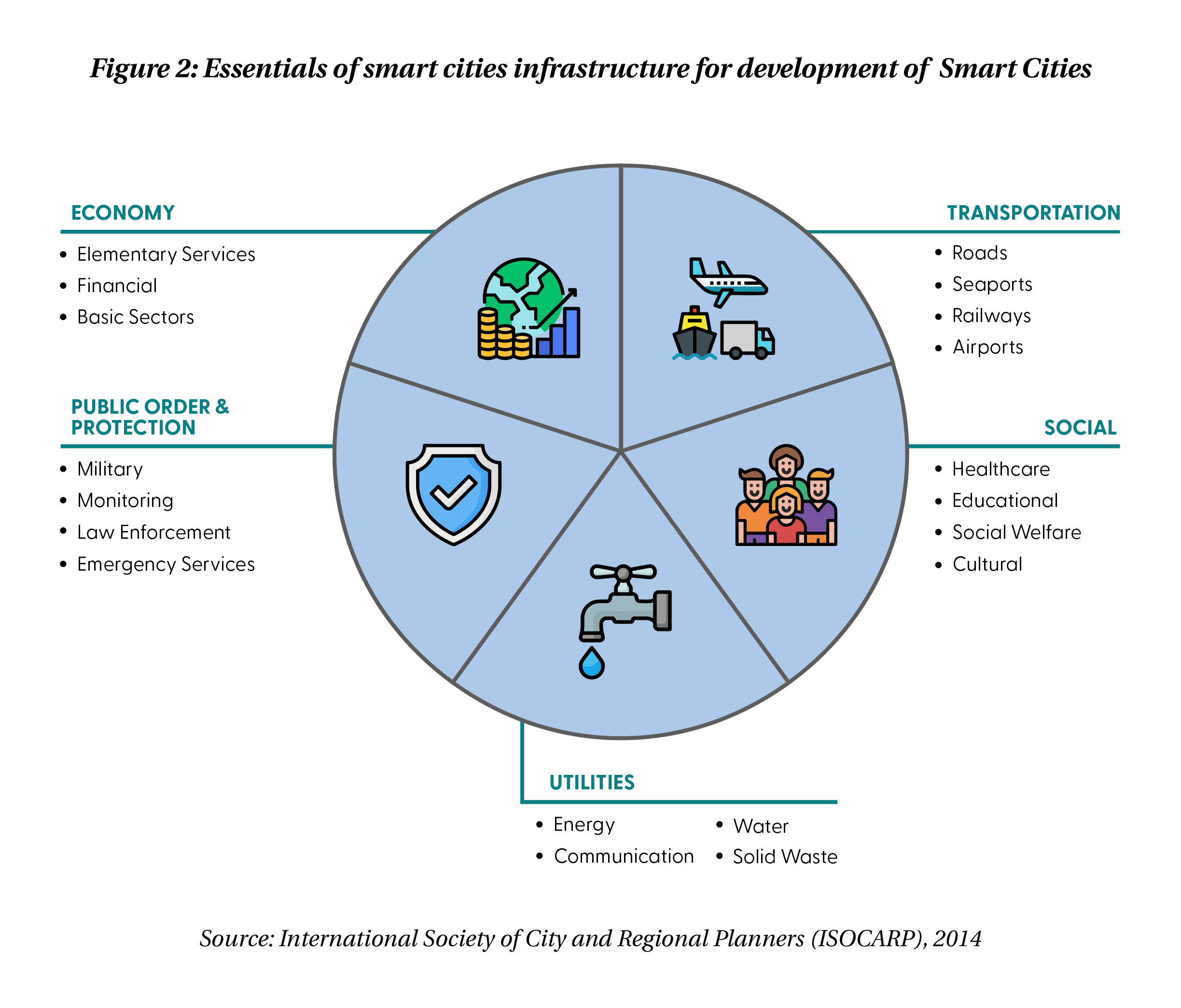 Challenges to Smart Cities Development in Pakistan
Challenges to Smart Cities Development in Pakistan
several challenges impede the development of smart cities in Pakistan, such as
Lack of awareness on how to operate and implement smart city projects.
Lack of consensus on the Right Model for the smart city in Pakistans’ Socio-Political context.
Developing countries like Pakistan are resource-constrained countries, and it becomes difficult for them to implement smart city projects.
No clear, cohesive road map, process and scale for the smart cities program.
Irrational and outdated government plans and their poor implementation.
Traditional lack of use of the participatory approach in capturing a local community’s needs, and local programs generally lack the concept of inclusion.
Inappropriate and inadequate digital infrastructure to build and sustain smart cities.
Lack of willingness of the government to formulate it.
Decentralised governance system with weak local government
Limited service delivery of the institutions.
Limited e-governance base.
The perpetual and elated energy crises and air pollution issues.
Readiness of Pakistan’s Cities
Case Study of Lahore and Multan
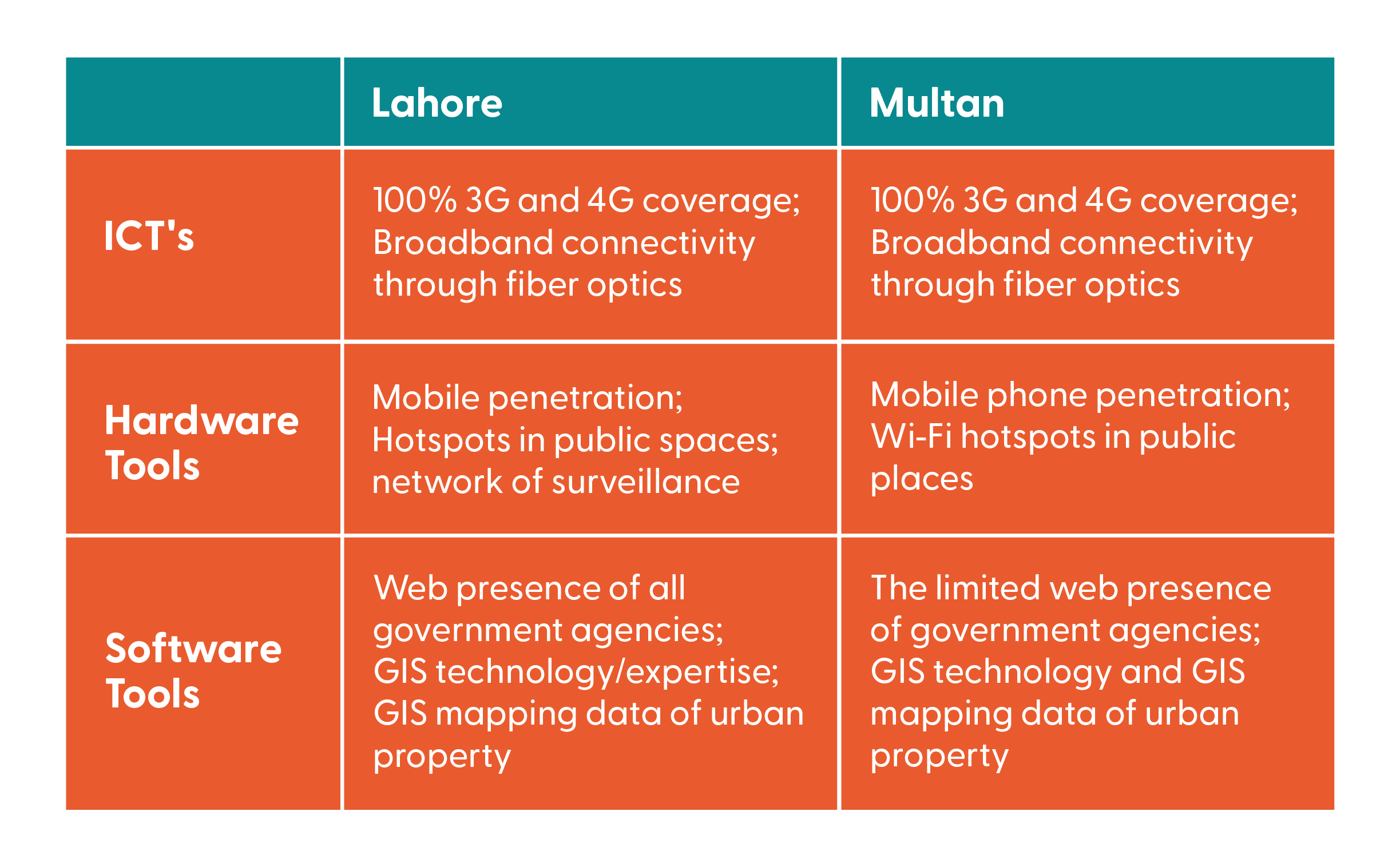
The availability of input components is well structured, which requires building smart cities in Lahore and Multan. In terms of surveillance cameras, Lahore is better than Multan, which are essential for collecting data and helping decision-making. Similarly, all the governmental agencies of Lahore are present in cyberspace, whereas Multan has limited space. E-government and e-governance are important components of smart governance (SG), and as per the table, Multan is far from achieving an SG (Lopes & Farooq, 2018).
Essential Components for Building Smart Cities

Solutions
Government should Propose a framework for developing smart cities at the national, provincial and city levels.
There is a need to develop and design a New Economic City by following the smart city paradigm, which also includes an industrial area which should be based on a Smart Industry planning framework.
The provincial government should initiate a ‘Replicable Model’, under which all stakeholders recommend replacing the city model with smart cities.
To implement the smart city model, the government can start a mixed approach to initiate reform from the top down and slowly move towards bottom-up intervention on a smaller scale.
To disseminate information and awareness about smart city development, stakeholders such as media, ICT companies, potential investors, and businessmen need to engage all stakeholders.
To enforce the model, the government can initiate two tiers: a high-level committee led by CM Punjab for developing vision; strategy; deciding about financial resources/model for interventions; an autonomous body for coordinating the execution of projects (this composition will be changed as per the need of the city).
The government can involve efficient and competent real estate businessmen to overcome budget constraints.
Concluding Remarks
To build world-class cities, it is incumbent to amalgamate technology with it. Pakistan direly needs smart cities to improve its administration and management. The country’s meagre IT infrastructure and poor governance impeded the implementation of the smart city model. In Pakistan, major cities like Lahore have the capacity to build it efficiently, but other cities have to improve the infrastructure. Pakistan’s government should effectuate the smart cities model to acquire prosperous cities.
References
Cohen, B. (2012). What exactly is a smart city? Retrieved from Fastcoexist: http://www.fastcoexist.com/1680538/whatexactly-is-a-smart-city
Government of Pakistan. (2018). Punjab Growth Strategy 2018. Planning and Development Department.
Khan, A. (2016). Smart Cities and Infrastructure: Challenges, Issues and Initiatives in Punjab Pakistan. Research Gates.
Lopes, N., & Farooq, S. (2018). Pakistan Smart Cities Context: Lahore and Multan. In V. a. al, Proceeding of International Conference .
Vu, K., & Hartley, K. (2017). Promoting Smart Cities in Developing Countries. Policies Insights from Vietnam Telecommunication Policy.
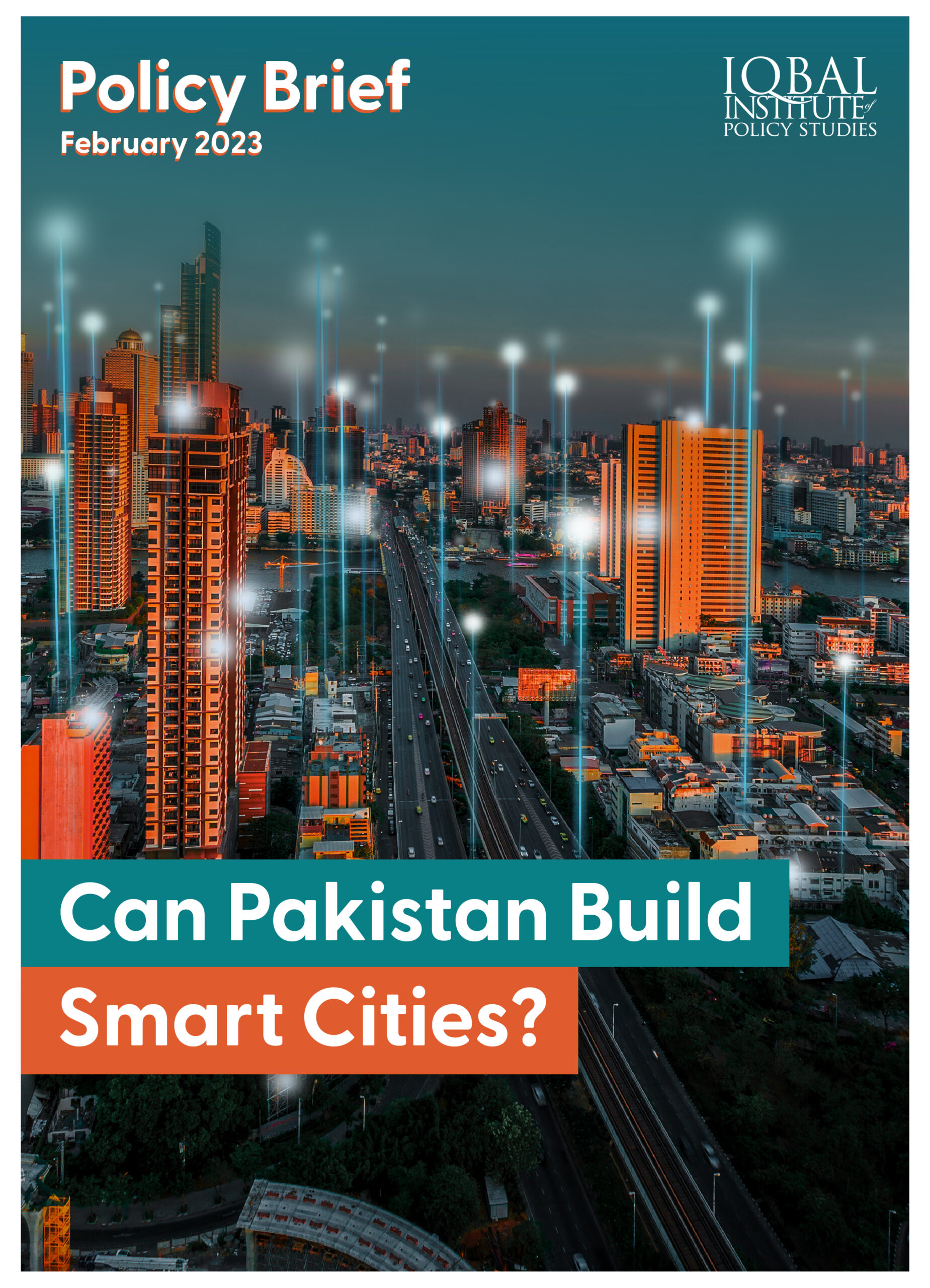

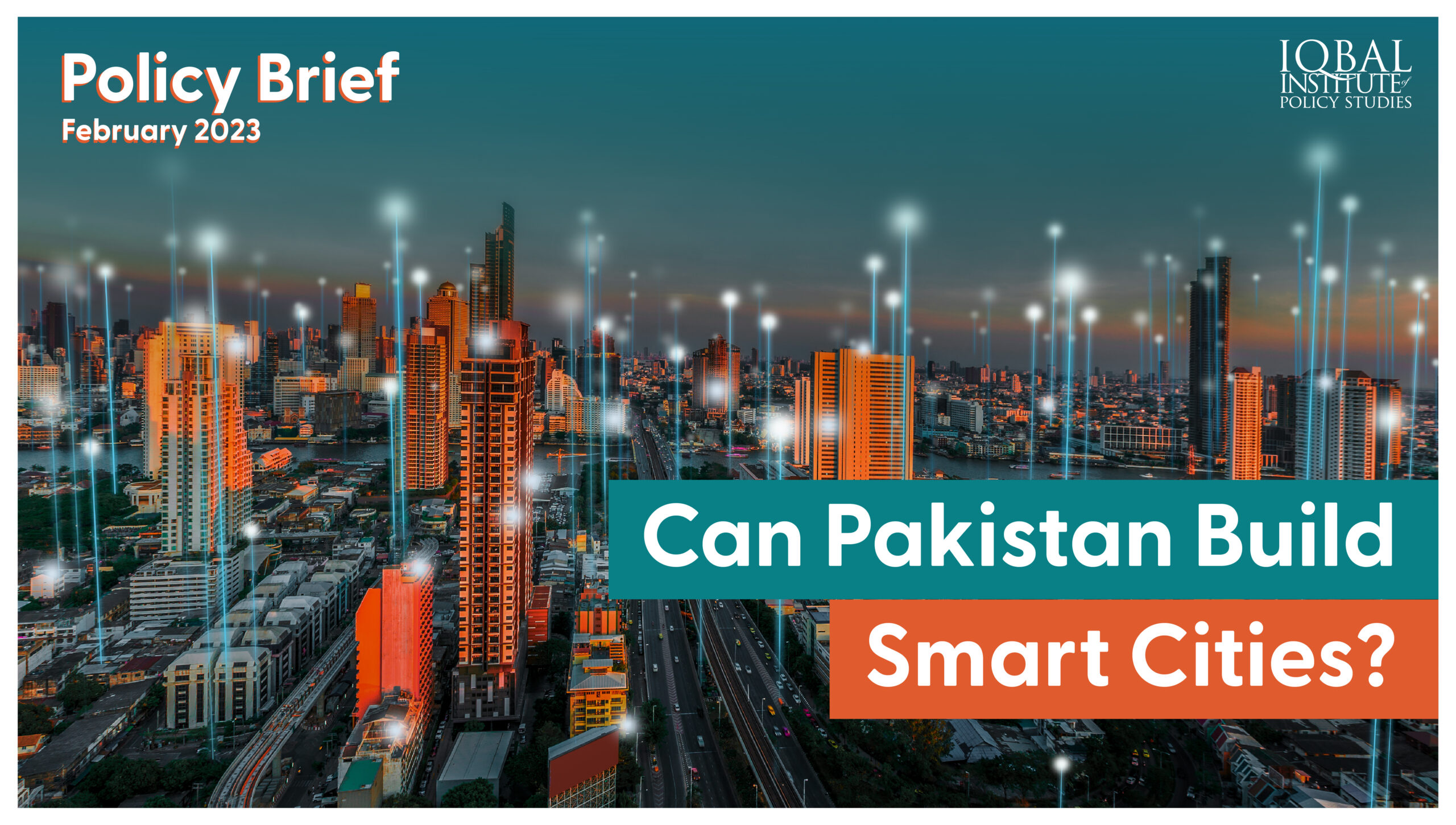
Leave a Reply